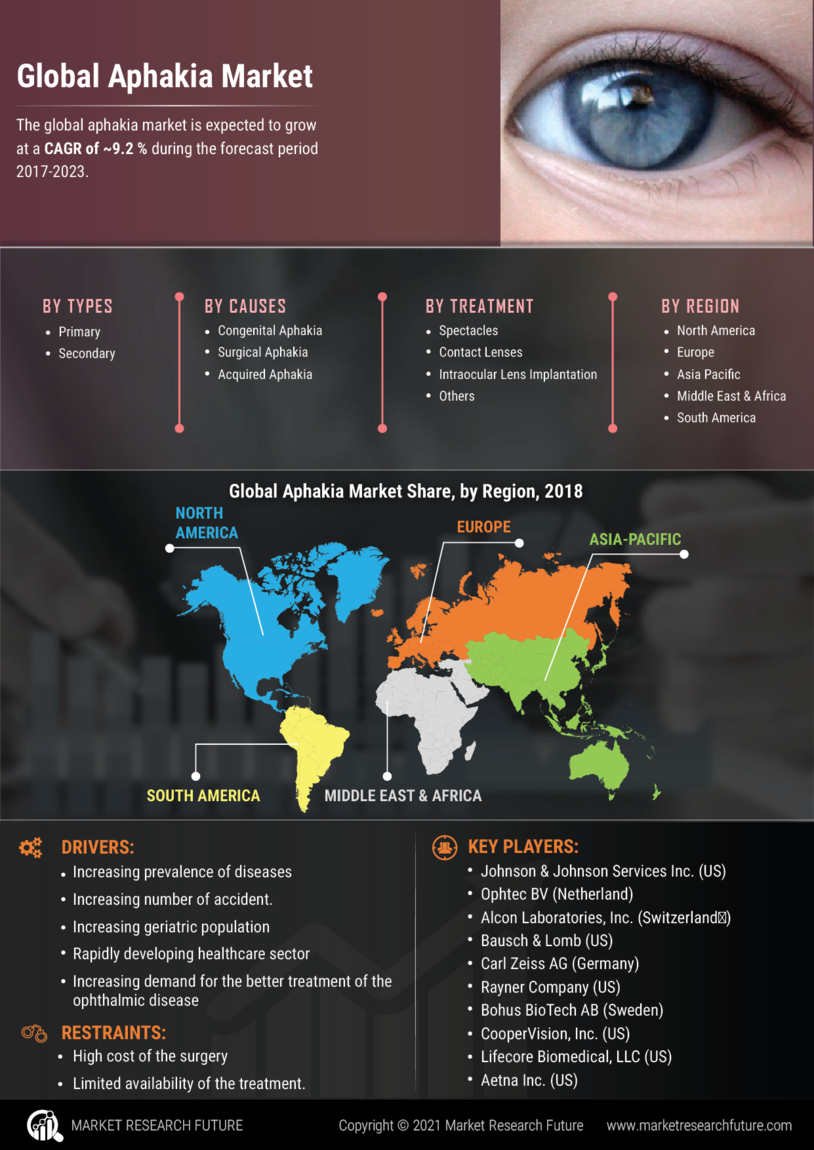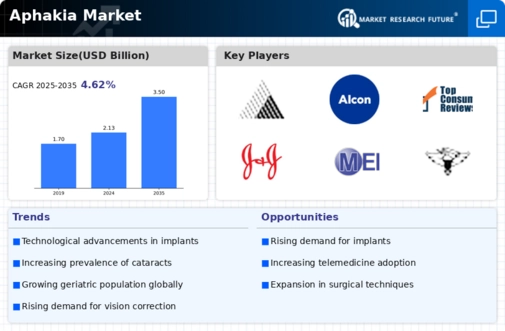Market Growth Projections
The Global Aphakia Market Industry is poised for substantial growth, with projections indicating a rise from 2.13 USD Billion in 2024 to 3.5 USD Billion by 2035. This growth trajectory suggests a compound annual growth rate (CAGR) of 4.62% from 2025 to 2035. Such figures reflect the increasing demand for effective treatment options for aphakia, driven by factors such as the aging population, advancements in technology, and heightened awareness of eye health. The market's expansion is indicative of a broader trend towards improved eye care and surgical interventions globally.
Growing Geriatric Population
The aging population is a significant factor influencing the Global Aphakia Market Industry. As individuals age, the likelihood of developing cataracts and other eye-related conditions increases, leading to a higher incidence of aphakia. The demographic shift towards an older population is evident, with projections indicating that by 2035, a substantial portion of the global population will be over 65 years old. This demographic trend is expected to drive demand for cataract surgeries and intraocular lenses, contributing to the market's growth and the development of innovative treatment options tailored for older patients.
Rising Prevalence of Eye Disorders
The Global Aphakia Market Industry is experiencing growth due to the increasing prevalence of eye disorders, particularly cataracts, which often lead to aphakia. As populations age, the incidence of cataracts rises, necessitating surgical interventions such as cataract extraction. In 2024, the market is projected to reach 2.13 USD Billion, reflecting the urgent need for effective treatment options. This trend is likely to continue, as the World Health Organization indicates that by 2035, the market could expand to 3.5 USD Billion, driven by the growing number of surgical procedures and the demand for advanced intraocular lenses.
Government Initiatives and Funding for Eye Health
Government initiatives aimed at improving eye health and funding for research are crucial drivers of the Global Aphakia Market Industry. Various health organizations and governments are investing in programs that promote eye health awareness, provide access to surgical treatments, and support research into new technologies. These initiatives not only enhance the availability of services but also encourage the development of advanced intraocular lenses and surgical techniques. As a result, the market is likely to see sustained growth, with increased funding facilitating innovations that improve patient care and outcomes.
Increased Awareness and Accessibility of Eye Care
The Global Aphakia Market Industry benefits from heightened awareness regarding eye health and the accessibility of eye care services. Public health campaigns and educational initiatives have led to a greater understanding of the importance of regular eye examinations and timely interventions for conditions like cataracts. This increased awareness is likely to drive more individuals to seek treatment, thereby expanding the market. As healthcare systems improve globally, the availability of surgical options for aphakia is expected to rise, further supporting market growth and enhancing patient outcomes.
Technological Advancements in Surgical Techniques
Innovations in surgical techniques and intraocular lens technology are pivotal drivers of the Global Aphakia Market Industry. Enhanced surgical methods, such as phacoemulsification and femtosecond laser-assisted cataract surgery, improve patient outcomes and reduce recovery times. These advancements not only increase the number of successful surgeries but also boost patient satisfaction. As a result, the market is expected to grow at a CAGR of 4.62% from 2025 to 2035, indicating a robust demand for new technologies that facilitate safer and more effective treatments for aphakia.

















Leave a Comment